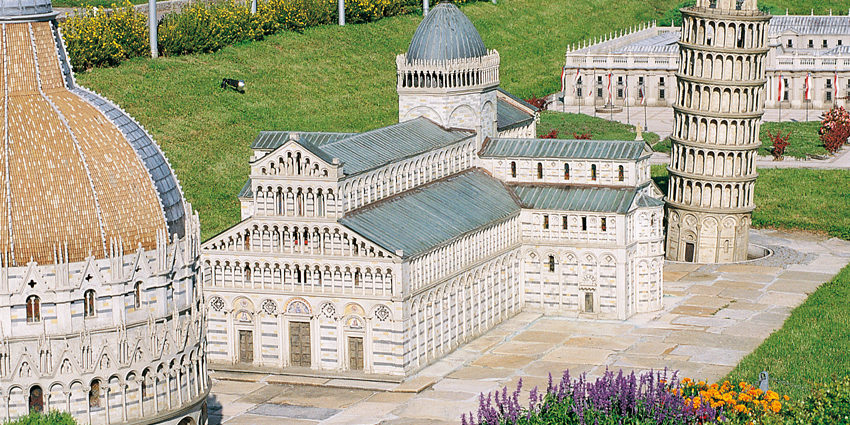The name of the “square of miracles” doesn’t only refer to the odd appearance of the campanile, known all over the world as “the leaning tower of Pisa”, but also to the unusual arrangement of the buildings and their extraordinary beauty. The cathedral was consecrated in 1118. Although work was carried out on the ensemble over hundreds of years, it is remarkably unified, most likely because all architectural elements were used more than once. The “Piazza dei Miracoli” was deliberately located on the outskirts of the town so as to increase the monumental effect of the edifices. Legend has it that Galileo Galilei, who was born in Pisa in 1564, made use of the tower’s tilt to study the laws of free fall. Pisa was a rich city state in the 11th century and had the strongest fleet on the Mediterranean. The Pisans demonstrated the splendour and greatness of their town by constructing these impressive buildings. Precious marble from Carrara and other places was used, setting architectural trends far beyond the city borders. Our model includes the leaning tower, the cathedral and the baptistery in the same constellation as they are to be found in Pisa.

